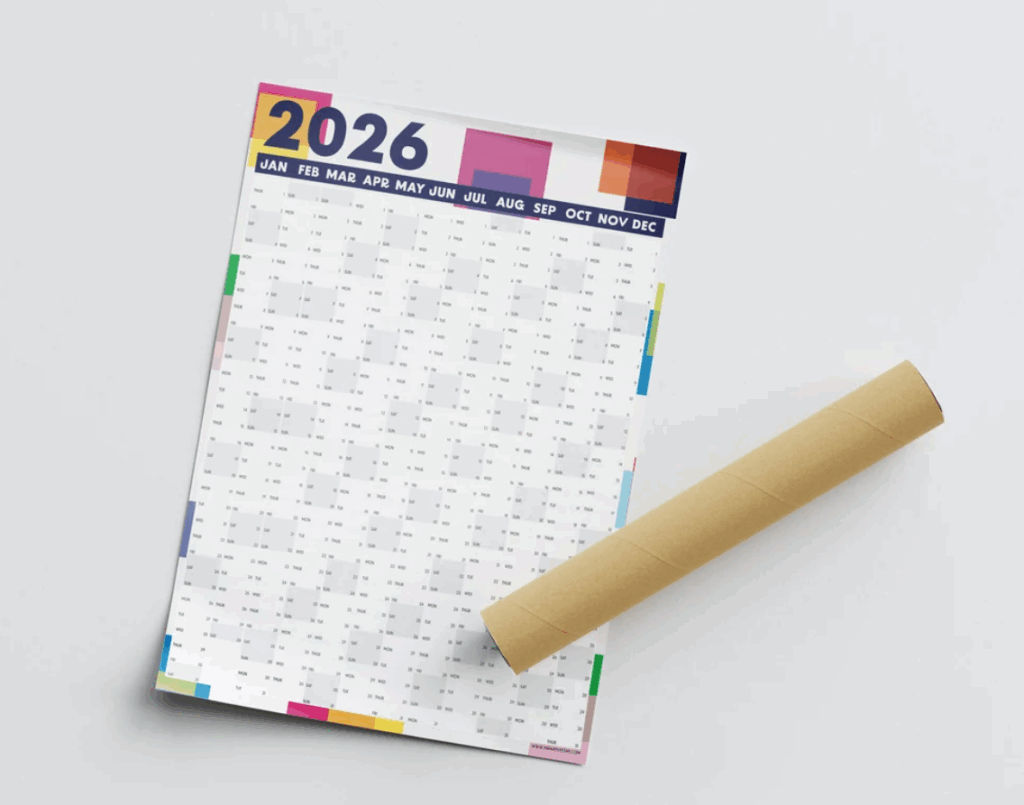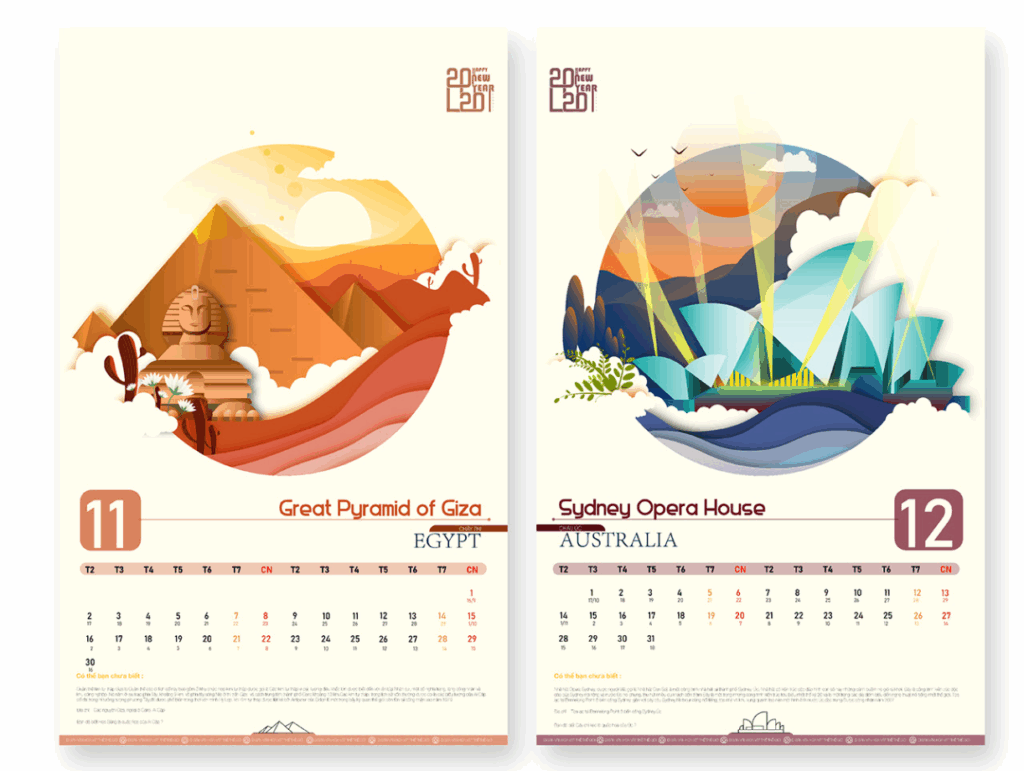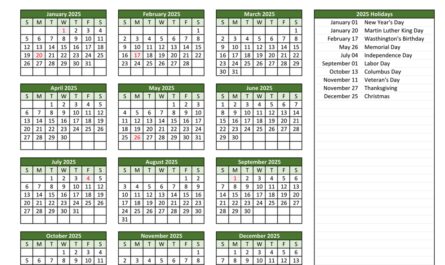Calendars transcend simple date-keeping—they tell stories of cultures, celebrate traditions, and preserve historical memory. A cultural and historical calendar transforms ordinary months into educational and celebratory tools, highlighting important dates, observances, and milestones meaningful to communities, organizations, and families. This comprehensive guide explores cultural calendar concepts, provides design strategies, offers free template resources, and shares practical tips for creating meaningful calendars that educate and inspire throughout 2026.

Why Cultural and Historical Calendars Matter

Educational Value
Cultural calendars educate viewers about diverse traditions, historical events, and meaningful observances. Display a cultural calendar in classrooms, offices, or homes creates daily learning opportunities. Each date becomes teaching moment—students or family members discover new information simply through regular calendar viewing.
Inclusivity and Representation
Diverse cultural calendars demonstrate respect for varied traditions and perspectives. Workplaces and schools featuring multiple cultural traditions signal inclusivity and value for diverse community members. This visible representation strengthens belonging and cross-cultural understanding.
Community Connection
Cultural calendars connect individuals to broader communities and historical narratives. Understanding shared celebrations, commemorations, and significant dates strengthens community bonds and collective identity. Calendars become conversation starters and connection points.
Historical Preservation
Documenting important historical dates prevents forgetting significant events. Cultural calendars ensure younger generations understand and remember important historical milestones, cultural movements, and significant figures.
Celebration and Recognition
Calendars highlighting important cultural observances ensure these celebrations receive appropriate recognition and planning. Without visible marking, important traditions risk being overlooked in busy schedules.

Types of Cultural and Historical Calendars
Religious Observance Calendars
Highlight sacred dates and religious celebrations across faith traditions:
- Christian Calendar: Easter, Christmas, Lent, saints’ days, Advent
- Islamic Calendar: Ramadan, Eid al-Fitr, Eid al-Adha, Hajj, Islamic New Year (follows lunar calendar, shifting annually)
- Jewish Calendar: Passover, Yom Kippur, Hanukkah, Sukkot, Shavuot (follows Hebrew calendar)
- Hindu Calendar: Diwali, Holi, Navratri, Ganesh Chaturthi, Krishna Janmashtami
- Buddhist Calendar: Vesak (Buddha’s Birthday), Bodhi Day, Buddhist New Year observances
- Sikh Calendar: Baisakhi, Guru Nanak Jayanti, Holi
- Multi-faith Calendar: Inclusive calendars featuring observances from multiple religious traditions
National and Cultural Heritage Calendars
Celebrate national identities and cultural heritage through country and culture-specific calendars:
- Indigenous Peoples’ Calendars: Honor Native American, Aboriginal, and Indigenous observances including traditional seasonal markers
- African Heritage Calendar: Celebrate African history, Pan-African movements, and African diaspora contributions
- Asian Heritage Calendar: Highlight Asian cultures, historical contributions, and cultural celebrations
- Latin American Heritage Calendar: Feature Latin American history, culture, and contributions
- LGBTQ+ Pride Calendar: Commemorate LGBTQ+ history, pride months, and significant milestones in equality movements
- Women’s History Calendar: Highlight women’s contributions, feminism milestones, and significant female figures
Historical Events and Commemorative Calendars
Mark significant historical dates and anniversaries:
- World History Calendar: Major historical events, revolutions, discoveries, and world-changing moments
- War and Conflict Remembrance: Military history dates, war anniversaries, memorials for fallen soldiers
- Civil Rights Calendar: Major civil rights milestones, protest anniversaries, movement leaders’ birthdays
- Space Exploration Calendar: Moon landing anniversaries, space program milestones, astronomical events
- Scientific Discovery Calendar: Major scientific breakthroughs, scientist birthdays, important research anniversaries
Arts and Cultural Movement Calendars
Celebrate artistic achievements and cultural movements:
- Artist Birthday Calendar: Birthdays of famous artists, composers, writers, and performers
- Literary Calendar: Publication anniversaries of important books, author birthdays, literary movement dates
- Music History Calendar: Genre milestones, musician birthdays, album anniversaries, historic concert dates
- Film History Calendar: Movie premiere anniversaries, director birthdays, cinema milestone dates
- Architecture Calendar: Building completion anniversaries, architect birthdays, architectural movement milestones
Environmental and Seasonal Calendars
Connect to natural cycles and environmental awareness:
- Seasonal Calendar: Traditional seasonal markers, solstices, equinoxes, seasonal celebrations across cultures
- Environmental Awareness Calendar: Earth Day, World Wildlife Day, environmental milestones, conservation dates
- Traditional Agriculture Calendar: Planting and harvest times according to cultural traditions, lunar calendars
- Astronomy Calendar: Meteor showers, planetary alignments, lunar phases, eclipses
Local and Community Calendars
Celebrate regional and community significance:
- City or Town History: Founding dates, historic anniversaries, local heroes’ birthdays
- Family Heritage Calendar: Family member birthdays, marriage anniversaries, important family historical dates
- Organizational History: Company founding dates, milestone anniversaries, organizational achievements
- School or University Calendar: Institution founding dates, notable alumni, academic milestone dates
Designing Effective Cultural Calendars
Visual Representation and Symbolism
Effective cultural calendars incorporate visual elements conveying cultural meaning:
- Cultural symbols: Include meaningful symbols, patterns, or artwork representing the culture or history being honored
- Color significance: Incorporate colors holding cultural significance (saffron for Indian culture, red for luck in Chinese traditions, green for Islamic heritage)
- Artistic style: Match artistic style to cultural aesthetic (calligraphy for Arabic, traditional patterns for Indigenous cultures, minimalist design for modern movements)
- Photography: Feature images of cultural sites, historical photographs, or artistic representations enhancing visual appeal and educational value
- Typography: Incorporate scripts or fonts reflecting cultural writing traditions when appropriate
Information Hierarchy and Clarity
Organize calendar information enabling quick comprehension:
- Date prominence: Ensure dates remain clearly visible despite decorative elements
- Event descriptions: Provide brief descriptions (2-3 sentences) explaining significance of marked dates
- Category identification: Use color-coding or symbols distinguishing different types of observances (religious, historical, cultural)
- Alphabetical organization: Include index or legend explaining symbols and color-coding systems
Balance Between Information and Aesthetics
Create visually appealing calendars without overwhelming viewers with text:
- Whitespace: Maintain adequate empty space preventing visual clutter
- Font sizing: Use varied font sizes creating visual hierarchy—dates largest, event descriptions medium, cultural notes smallest
- Decorative elements: Incorporate design elements enhancing cultural theme without obscuring calendar functionality
- Consistency: Maintain consistent design treatment across all months creating cohesive aesthetic
Multilingual Options
Include multiple languages enhancing accessibility and educational value:
- Event names in both English and native language ([translate:例如/For example]: “Diwali” alongside [translate:दिवाली/Diwali in Hindi])
- Descriptions in multiple languages for diverse audiences
- Traditional month names alongside Gregorian calendar months
- Cultural calendar system alongside Western calendar (example: Islamic year alongside Common Era)
Free Template Resources and Where to Find Them
Online Template Sites
- Canva: Extensive cultural calendar templates; searchable by culture or theme; free and premium options; fully customizable
- Template.net: Diverse cultural calendar templates; free downloads available; multiple styles and designs
- Vertex42.com: Excel-based calendars editable for cultural customization; free download
- Calendarlabs.com: Holiday and cultural calendars for various cultures; free printable versions
- Microsoft Office Templates: Built-in calendar templates customizable for cultural themes
- Adobe Express: Free calendar templates with cultural designs; simple customization
- Etsy Printables: Individual designer cultural calendars; affordable ($3-15 typically); unique designs
Cultural Organization Resources
Many cultural organizations provide free calendars and downloadable templates:
- Religious organizations: Churches, mosques, synagogues, temples often distribute calendars marking religious observances
- Heritage organizations: Cultural societies, heritage centers, and diaspora organizations frequently provide community calendars
- Educational institutions: Universities, museums, and cultural centers often publish calendars highlighting cultural programming
- Government resources: Government agencies sometimes provide heritage month calendars or cultural observance information
DIY Template Creation
Create custom templates using accessible tools:
- Google Sheets: Create calendar grid in spreadsheet; add cultural information; format and print
- Microsoft Word/Excel: Built-in table functions enable calendar creation; customize with cultural content
- Google Slides: Design calendar layout slide-by-slide; incorporate images and design elements; print individual slides
- Canva: Drag-and-drop interface enables creation without design experience; thousands of cultural design elements available
- Adobe InDesign: Professional design tool enabling precise control; steep learning curve but maximum customization
Cultural Calendar Content Ideas for 2026
January 2026 Content Examples
- January 1: New Year celebrations (Gregorian calendar), World Peace Day
- January 8: Elvis Presley’s birthday (music history)
- January 20: Martin Luther King Jr. Day (U.S. civil rights)
- January 26: Australia Day, India Republic Day (national heritage)
- January 27: Holocaust Memorial Day (historical remembrance)
February 2026 Content Examples
- February 1: Rosa Parks Day (civil rights history)
- February 12: Abraham Lincoln’s birthday (historical figures)
- February 14: Valentine’s Day (cultural tradition)
- February 21: International Mother Language Day (cultural preservation)
- February 28: Ramadan begins (Islamic calendar—date varies annually by lunar calendar)
Spring Observances (March-May)
- March 8: International Women’s Day (global movement)
- March 21: International Day for the Elimination of Racial Discrimination, Spring Equinox
- April 22: Earth Day (environmental awareness)
- May 1: International Workers’ Day (labor history)
- May 25: Africa Day (continental heritage)
Summer Observances (June-August)
- June 19: Juneteenth (U.S. emancipation history)
- June 21: Summer Solstice (seasonal marker)
- July 4: Independence Day (U.S. national holiday)
- August 15: Indian Independence Day (national heritage)
- August 26: Women’s Equality Day (women’s rights history)
Autumn Observances (September-November)
- September 15-October 15: Hispanic Heritage Month (cultural celebration)
- September 21: International Peace Day, Fall Equinox
- October 2: International Day of Non-Violence (Mahatma Gandhi’s birthday)
- November 11: Veterans Day (military remembrance)
- November (fourth Thursday): Thanksgiving (cultural tradition)
Winter Observances (December)
- December 3: International Day of Persons with Disabilities
- December 10: Human Rights Day (historical commemoration)
- December 21: Winter Solstice, Yule (seasonal marker)
- December 25: Christmas (religious observance, cultural celebration)
- December 26-January 1: Kwanzaa (African American cultural celebration)
Lunar Calendar Integration
Understanding Lunar Calendars
Many cultural and religious observances follow lunar calendars, meaning dates shift annually relative to the Gregorian calendar. Creating comprehensive cultural calendars requires accommodating this complexity:
- Islamic Calendar: Follows lunar months; approximately 11 days shorter than solar year; observances shift earlier each Gregorian year
- Hebrew Calendar: Lunisolar system; aligns lunar months with solar year through periodic leap months; dates remain roughly within same season
- Traditional Chinese Calendar: Lunisolar system; combines lunar months with solar year adjustments; Chinese New Year typically falls late January-early February
- Hindu Calendar: Multiple regional variations; generally lunisolar; dates vary by region and specific tradition
Noting Variable Dates
When creating calendars featuring lunar observances, include notifications about variable dates:
- Mark dates with asterisks indicating “date varies by lunar calendar”
- Include note explaining which observances follow lunar calendars
- Provide resource links to authoritative sources for lunar calendar dates
- Create calendar version noting both expected 2026 dates and notation that exact dates should be verified
Practical Tips for Creating Cultural Calendars
Tip 1: Research Thoroughly and Verify Information
Accurate cultural representation requires careful research:
- Consult primary sources from cultural and religious organizations
- Verify dates with multiple authoritative sources
- Check current observance practices (some traditions have evolved or changed)
- When including descriptions, ensure they accurately reflect cultural significance and practices
- Attribute information appropriately when including quotes or specific details
Tip 2: Include Context and Significance Notes
Brief descriptions enhance educational value:
- Include 2-3 sentence descriptions explaining “why” dates are significant
- Note how different communities might celebrate the same date
- Provide historical context for commemorative dates
- Explain cultural practices associated with celebrations
Tip 3: Respect and Sensitivity
Approach cultural representation respectfully:
- Avoid stereotypes or superficial representations of cultures
- Include diverse perspectives within cultures when applicable
- Acknowledge complex or contested historical dates appropriately
- Use culturally appropriate imagery and design elements
- When in doubt, consult with members of the culture being represented
Tip 4: Make Calendars Accessible
Design for universal access:
- Ensure sufficient contrast between text and background for readability
- Use accessible fonts, particularly avoiding thin or ornamental fonts
- Provide large-print versions for those with vision challenges
- Include digital text versions enabling screen reader compatibility
- Translate into multiple languages when serving diverse audiences
Tip 5: Include Context-Setting Information
Help viewers understand calendar context:
- Include title clearly identifying calendar focus (example: “2026 Religious Observances Calendar,” “Indigenous Heritage Calendar”)
- Add brief introduction explaining calendar purpose
- Provide legend explaining symbols, colors, or abbreviations
- Include bibliography or resource guide for further learning
- Note calendar creator or organization for attribution
Tip 6: Plan for Multiple Format Distribution
Ensure calendars reach intended audiences:
- Create digital PDF versions for email and online sharing
- Design printable versions optimized for standard paper sizes
- Develop wall-display versions (11×17″ or poster size)
- Create mobile-friendly digital calendar versions
- Consider print-on-demand services enabling easy distribution
Uses for Cultural Calendars
Educational Settings
Cultural calendars enhance classroom learning:
- Display in classrooms introducing students to diverse cultures
- Use as springboard for research projects and presentations
- Create interdisciplinary learning connecting history, culture, geography
- Enable students to share their own cultural observances
Workplace and Corporate Settings
Demonstrate organizational commitment to diversity and inclusion:
- Display in office lobbies, conference rooms, break rooms
- Help staff understand colleagues’ cultural observances and holidays
- Inform scheduling decisions respecting diverse cultural and religious practices
- Support employee resource groups organizing cultural celebrations
Community Organizations
Strengthen community identity and connection:
- Cultural organizations distribute calendars to community members
- Libraries feature community cultural calendars
- Community centers use calendars organizing programming around cultural observances
- Religious organizations use calendars helping members plan spiritual observances
Family Use
Create personalized family heritage calendars:
- Include family member birthdays alongside cultural observances
- Mark important family anniversaries and milestones
- Note family cultural traditions and celebrations
- Create family heirloom calendars passed through generations
Museums and Cultural Institutions
Educational and promotional applications:
- Museums distribute calendars featuring exhibits and cultural programming
- Heritage sites create calendars highlighting historical significance
- Cultural centers use calendars promoting community programming
- Libraries create calendars supporting cultural literacy
Printing and Production Options
At-Home Printing
Budget-friendly option for personal use or small-scale distribution:
- Print on standard paper (economical) or cardstock (durable)
- Use color ink ensuring cultural elements display accurately
- Laminate for durability if displaying for extended periods
- Bind with staples, brads, or spiral binding as needed
Professional Printing Services
Higher quality output for larger quantities or display purposes:
- Print shops provide color accuracy superior to home printing
- Professional services enable larger sizes (11×17″, poster sizes)
- Binding and finishing options available (spiral binding, lamination)
- Typically cost $2-10 per calendar depending on size and quantity
Print-on-Demand Services
Enable online distribution without upfront printing costs:
- Services like Printful, Etsy Print, or Blurb enable design upload and on-demand printing
- Customers order and pay individually
- Creator receives royalty per sale
- Enables easy distribution of limited editions or variations
Digital Distribution and Accessibility
Digital Calendar Formats
Make calendars accessible online:
- PDF: Universal format preserving layout; easily shareable and downloadable
- Image files (JPG, PNG): Enable easy social media sharing
- Interactive digital calendars: Create online calendars with clickable dates providing additional information
- Email newsletters: Share monthly calendar updates via email
- Social media: Post monthly calendar graphics creating anticipatory engagement
Website Integration
Host calendars on organizational websites:
- Embedded calendar viewers enabling direct viewing on website
- Download buttons enabling PDF or image downloads
- Searchable calendar databases enabling filtering by culture or observance type
- Calendar subscription enabling visitors to sync with personal calendars
Community Engagement and Feedback
Gathering Input
Involve communities in calendar development:
- Survey community members about observances to include
- Invite suggestions from cultural organizations and religious leaders
- Request feedback on accuracy and cultural appropriateness
- Incorporate community input into calendar revisions
Annual Updates
Maintain calendars as living documents:
- Update annually with current dates for lunar-based observances
- Add new observances based on community feedback
- Refresh design while maintaining consistent branding
- Archive previous years enabling historical comparison
Conclusion: Calendars as Cultural Bridges
Cultural and historical calendars transcend functional timekeeping, becoming educational tools, community connectors, and cultural preservation vehicles. Whether highlighting religious observances, historical milestones, artistic achievements, or community heritage, thoughtfully designed cultural calendars celebrate diversity while educating and inspiring.
Begin by identifying which cultures, histories, or themes your calendar will highlight. Research thoroughly, ensuring accurate representation and respectful treatment. Select or create template matching your design vision. Populate with significant dates, brief descriptions, and contextual information. Design visually appealing layouts that function effectively. Print or distribute through appropriate channels reaching intended audiences.
The 2026 calendar year presents opportunity to create meaningful cultural calendars advancing understanding, celebrating diversity, and preserving important historical narratives. Start planning your cultural calendar today—your community will benefit from the visibility and recognition of the cultures and histories deserving celebration.


